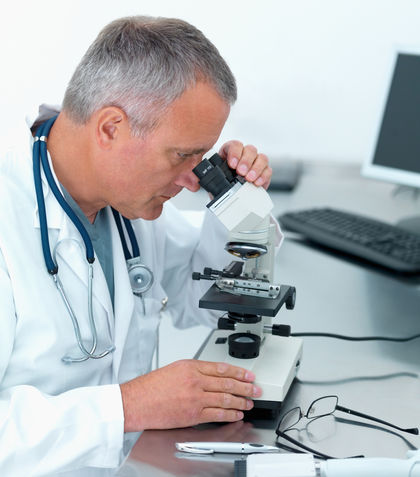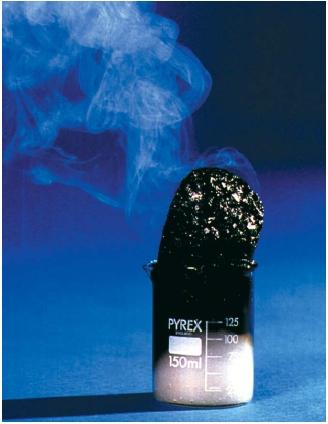Reaction, chemical

When a chemical reaction occurs, at least one product is formed that is different from the substances present before the change occurred. As an example, it is possible to pass an electric current through a sample of water and obtain a mixture of oxygen and hydrogen gases. That change is a chemical reaction because neither oxygen nor hydrogen were present as elements before the change took place.
Any chemical change involves two sets of substances: reactants and products. A reactant is an element or compound present before a chemical change takes place. In the example above, only one reactant was present: water. A product is an element or compound formed as a result of the chemical reaction. In the preceding example, both hydrogen and oxygen are products of the reaction.
Chemical reactions are represented by means of chemical equations. A chemical equation is a symbolic statement that represents the changes that occur during a chemical reaction. The statement consists of the symbols of the elements and the formulas of the products and reactants, along with other symbols that represent certain conditions present in the reaction. For example, the arrow (or yields) sign, *, separates the reactants from the products in a reaction. The chemical equation that represents the electrolysis of water is 2 H 2 O → 2 H 2 + O 2 .
Types of chemical reactions
Most chemical reactions can be categorized into one of about five general types: synthesis, decomposition, single replacement, double replacement, and oxidation-reduction. A miscellaneous category is also needed for reactions that do not fit into one of these five categories.
Characteristics of each type.
Synthesis: Two substances combine to form one new substance:
In general: A + B → AB
For example:
2 Na + Cl 2 → 2 NaCl or CaO + H 2 O → Ca(OH) 2
Decomposition: One substance breaks down to form two new substances:
In general: AB → A + B
For example: 2 H 2 O → 2 H 2 + O 2
Single Replacement: An element and a compound react such that the element replaces one other element in the compound:
In general: A + BC → AC + B
For example: Mg + 2 HCl → MgCl 2 + H 2
Double Replacement: Two compounds react with each other in such a way that they exchange partners with each other:
In general: AB + CD → AD + CB
For example:
NaBr + HCl → NaCl + HBr
Oxidation-reduction: One or more elements in the reaction changes its oxidation state during the reaction: In general: A 3+ → A 6+
For example: Cr 3+ → Cr 6+
Energy changes and chemical kinetics
Chemical reactions are typically accompanied by energy changes. The equation for the synthesis of ammonia from its elements is N 2 + 3 H 2 → 2 NH 3 , but that reaction takes place only under very special conditions—namely at a high temperature and pressure and in the presence of a catalyst. Energy changes that occur during chemical reactions are the subject of a field of science known as thermodynamics.
In addition, chemical reactions are often a good deal more complex than a chemical equation might lead one to believe. For example, one can write the equation for the synthesis of hydrogen iodide from its elements, as follows: H 2 + I 2 → 2 HI. In fact, chemists know that this reaction does not take place in a single step. Instead, it occurs in a series of reactions in which hydrogen and iodine atoms react with each other one at a time. The final equation, H 2 + I 2 → 2 HI, is actually no more than a summary of the net result of all those reactions. The field of chemistry that deals with the details of chemical reactions is known as chemical kinetics.

--stalissney
I just wanted to know what reaction water molecules have when the human body comes into contact with it what the molecules do thanks!